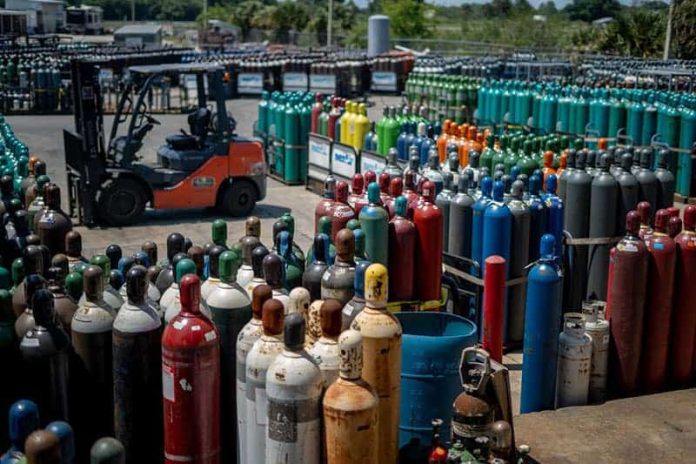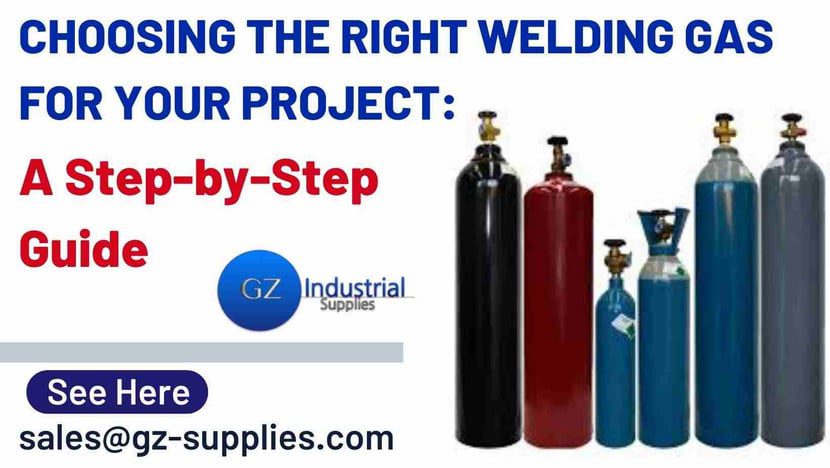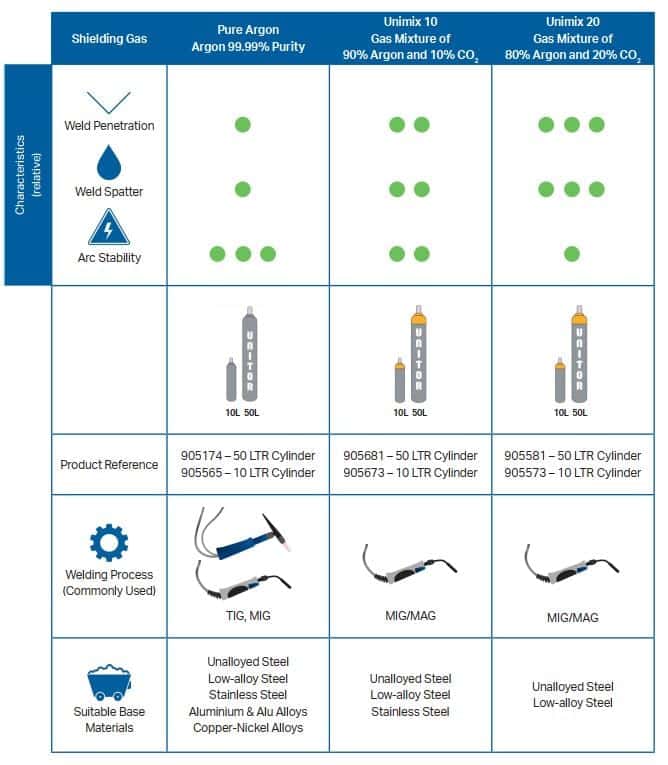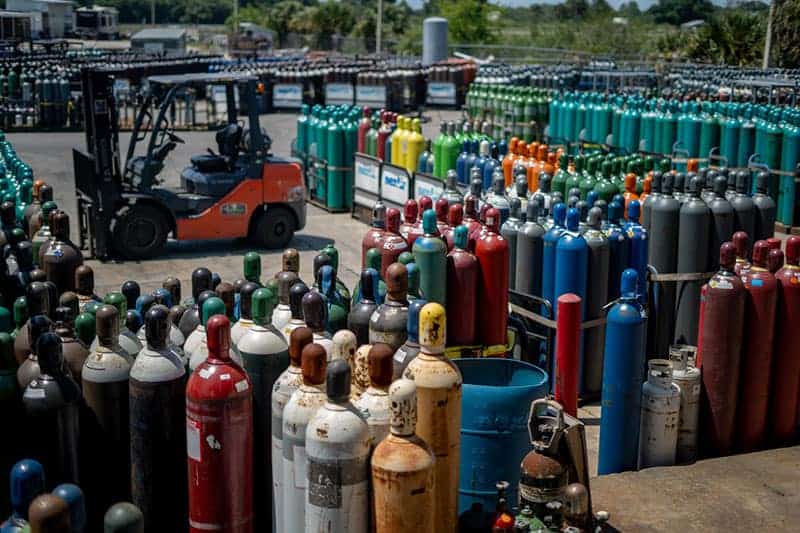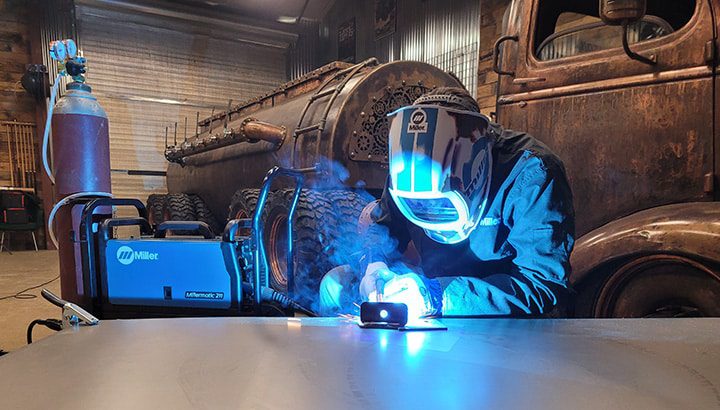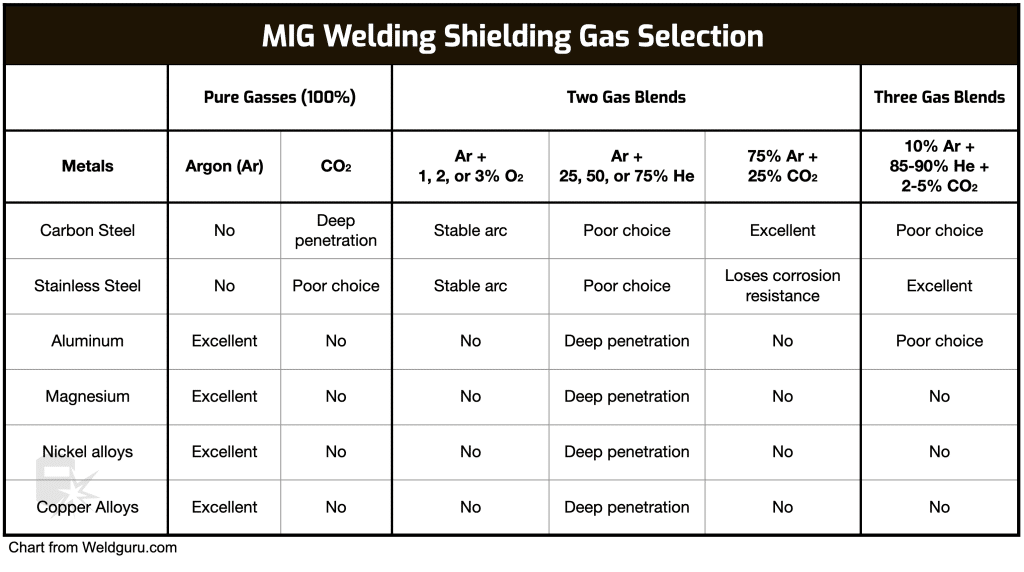Deciding on the right welding gas for a project can often feel like navigating through a maze of options. With different gases available, each boasting its own unique properties, it can be overwhelming to determine which one will best suit your specific welding needs. Fortunately, we’re here to guide you through this process, providing you with valuable insights and considerations to help you make an informed decision. From understanding the role of different gases in the welding process to evaluating the specific requirements of your project, we’ll ensure that you choose the right welding gas with confidence and ease.
Review contents
Factors to Consider When Choosing Welding Gas
Type of Metal to be Welded
When selecting the appropriate welding gas for your project, it’s essential to consider the type of metal you will be welding. Different metals have different welding requirements, and using the correct gas is crucial for achieving high-quality and durable welds. For example, carbon steel typically requires a combination of Argon and Carbon Dioxide (CO2) for MIG welding, while stainless steel may require the use of Argon and Helium mixtures.
Type of Welding Process
The welding process you plan to use is another significant factor in determining the appropriate welding gas. Different welding processes have varying requirements in terms of shielding gases. MIG (Metal Inert Gas) welding, for example, typically benefits from the use of a mixture of Argon and CO2. On the other hand, TIG (Tungsten Inert Gas) welding often utilizes pure Argon or a mixture of Argon and Helium.
Cost
Cost is undoubtedly an important consideration when choosing welding gas. While it’s essential to select the appropriate gas for the job, it’s also necessary to consider your budget. Welding gases can vary significantly in price, so it’s worth comparing different options and considering the overall cost-effectiveness, including the efficiency and quality of the welds produced.
Availability
The availability of welding gases is another crucial factor to consider. Depending on your location, certain gases may be readily accessible, while others may not be as readily available. It’s important to ensure that the necessary gases are readily obtainable to avoid delays and interruptions to your welding projects.
Shielding Properties
The shielding properties of the welding gas are essential to protect the molten weld pool from atmospheric contamination. The gas acts as a shield, preventing oxygen and other unwanted gases from coming into contact with the welding area. Different shielding gases have varying levels of effectiveness, and selecting the right gas for your specific project is crucial.
Gas Mixtures
Gas mixtures offer a way to enhance the performance and versatility of welding gases. By combining different gases, you can achieve specific results tailored to your project’s requirements. Some common gas mixtures include Argon/CO2, Argon/Oxygen, and Argon/Helium/Carbon Dioxide. These mixtures offer improved arc stability, better penetration, decreased spatter, and enhanced overall welding characteristics.
This image is property of cdn11.bigcommerce.com.
Different Types of Welding Gases
Oxygen (O2)
Oxygen is a commonly used welding gas that supports combustion and facilitates higher heat levels. While it can be used in welding processes like oxyfuel welding and cutting, it’s generally not used as a shielding gas due to its reactive nature. Oxygen can react with the base metal or filler material, leading to undesirable outcomes such as oxidation and porosity in the weld.
Acetylene (C2H2)
Acetylene is a highly flammable gas that is mainly used for oxyfuel cutting and heating, rather than as a shielding gas. Its high heat release makes it suitable for applications that require intense heat, such as metal fabrication or cutting through thick metal sections. However, due to safety concerns and the availability of alternative cutting and heating methods, acetylene is less commonly used today.
Argon (Ar)
Argon is an inert gas commonly used as a shielding gas in various welding processes. It offers excellent arc stability, non-reactivity with most metals, and minimal oxidation during welding. Argon is particularly useful for TIG welding stainless steel and aluminum. It can also be used in mixtures with other gases to enhance weld characteristics.
Carbon Dioxide (CO2)
Carbon Dioxide is commonly used in welding processes such as MIG and flux-cored arc welding. It provides good penetration and weld pool control, making it suitable for welding thick materials. CO2 is cost-effective and readily available, but it can produce more spatter and require additional post-weld cleaning compared to other shielding gases.
Helium (He)
Helium is an inert gas known for its low density and high thermal conductivity. It is commonly used in mixtures with other shielding gases like Argon and CO2 to improve heat transfer and arc stability. Helium is particularly beneficial for welding non-ferrous metals like aluminum and copper, as it helps prevent oxidation and provides deeper penetration.
Hydrogen (H2)
Hydrogen gas is sometimes used as a component in gas mixtures for specific welding applications. It offers good heat transfer and increased arc voltage, resulting in better penetration and a narrow, focused weld bead. However, hydrogen can be highly reactive, and its use requires careful control to prevent hydrogen-induced cracking or embrittlement in the weld.
Nitrogen (N2)
Nitrogen is an inert gas that is occasionally used as a shield gas or as a component of gas mixtures. It is typically utilized for specific welding applications, such as purging air-sensitive materials like titanium or stainless steel during TIG welding. Nitrogen can also be used to create an inert environment in certain types of heat treatment processes.
Gas Mixtures
Gas mixtures combine different gases to achieve specific properties and improvements in welding performance. Some commonly used gas mixtures include Argon/CO2, Argon/Oxygen, and Argon/Helium/Carbon Dioxide. These mixtures offer advantages such as improved arc stability, enhanced penetration, reduced spatter, and increased productivity. The choice of gas mixture depends on the desired weld characteristics and the type of metal being welded.
This image is property of www.wilhelmsen.com.
Choosing the Right Welding Gas for Specific Projects
MIG Welding
MIG welding, also known as Gas Metal Arc Welding (GMAW), is a popular welding process that uses a consumable electrode wire and an inert shielding gas for protection against atmospheric contamination. The most commonly used shielding gas for MIG welding is a mixture of Argon and CO2, known as C25 or 75% Argon/25% CO2. This gas mixture provides good overall weld quality and is suitable for a wide range of applications, including carbon steel, stainless steel, and aluminum.
TIG Welding
TIG welding, or Gas Tungsten Arc Welding (GTAW), is a precise and versatile welding process that produces high-quality welds. It typically requires a pure Argon shielding gas, as Argon provides effective protection against atmospheric contamination and allows for better control over the welding arc. TIG welding is commonly used for welding stainless steel, aluminum, and other non-ferrous metals.
Stick Welding
Stick welding, also known as Shielded Metal Arc Welding (SMAW), is a versatile and easy-to-learn welding process that can be used for various projects, including repairs, maintenance, and construction. Stick welding primarily uses a flux-coated electrode, which provides its own shielding properties. While stick welding usually doesn’t require an external shielding gas, certain applications may benefit from the use of shielding gases like Argon or CO2.
Flux-Cored Arc Welding
Flux-Cored Arc Welding (FCAW) is a process that uses a continuously fed electrode with a flux-filled core. The flux in the electrode wire provides shielding properties, protecting the weld from atmospheric contamination. FCAW can be performed with or without external shielding gases. Some applications may require the use of shielding gases like CO2 or a mixture of Argon and CO2 to improve weld quality and performance.
Submerged Arc Welding
Submerged Arc Welding (SAW) is a process that involves the formation of an arc between a continuously fed electrode and the workpiece. The arc is shielded by a layer of granular flux, which also produces gases to protect the molten weld pool. SAW typically doesn’t require the use of external shielding gases, as the flux provides sufficient protection. However, certain applications may benefit from the addition of specific gases to enhance weld properties.
Gas Metal Arc Welding (GMAW)
Gas Metal Arc Welding (GMAW), commonly known as MIG welding, uses a consumable electrode wire and an inert or active shielding gas to protect the weld from atmospheric contamination. The choice of shielding gas depends on the type of metal being welded. For carbon steel, a mixture of Argon and CO2 is often used, while stainless steel and aluminum welding typically require pure Argon or a mixture of Argon and Helium.
Gas Tungsten Arc Welding (GTAW)
Gas Tungsten Arc Welding (GTAW), also known as TIG welding, uses a non-consumable tungsten electrode and a separate filler material if required. TIG welding requires a pure Argon shielding gas due to its excellent non-reactive properties and ability to create a stable arc. This process is commonly used for welding materials like stainless steel, aluminum, and other non-ferrous metals that require precise control and high-quality welds.
This image is property of www.nexair.com.
Gas Mixtures for Enhanced Performance
Argon/Carbon Dioxide (Ar/CO2) Mixtures
Argon/Carbon Dioxide mixtures, such as the commonly used C25 mixture (75% Argon/25% CO2), are widely used in MIG welding applications. These mixtures offer a balance between good weld quality, improved penetration, and reduced spatter. The CO2 component provides deep penetration, while the Argon enhances arc stability and bead appearance. Ar/CO2 mixtures are suitable for welding carbon steels, low-alloy steels, and some stainless steels.
Argon/Oxygen (Ar/O2) Mixtures
Argon/Oxygen mixtures are commonly used in TIG welding applications that involve stainless steel or carbon steel welding. The addition of oxygen to the Argon shielding gas increases the arc temperature and provides better oxide removal, resulting in improved weld penetration and a narrower weld bead. Ar/O2 mixtures are particularly beneficial for applications requiring deep weld penetration or when using thicker materials.
Argon/Helium/Carbon Dioxide (Ar/He/CO2) Mixtures
Argon/Helium/Carbon Dioxide mixtures combine the benefits of each gas to achieve enhanced welding performance. Helium increases heat input and penetration, while Argon enhances arc stability and gas coverage. The addition of CO2 can improve productivity and bead appearance. These mixtures are often used for welding aluminum and stainless steel, as they provide excellent bead characteristics, reduced spatter, and good arc control.
This image is property of www.millerwelds.com.
Considerations for Gas Handling and Storage
Cylinder Size and Capacity
When it comes to gas handling and storage, considering the cylinder size and capacity is crucial. The size of the cylinder depends on the volume of gas needed for your welding projects. Smaller cylinders are more portable but may require more frequent refilling, while larger cylinders provide a higher gas capacity but can be less portable. It’s important to assess your gas consumption and project requirements to determine the most suitable cylinder size and capacity.
Transportation and Storage Safety
Transporting and storing welding gases safely is of utmost importance to prevent accidents. Gas cylinders should be properly secured during transportation to prevent tipping or falling. They should also be stored in well-ventilated areas away from ignition sources and combustible materials. It’s essential to adhere to safety guidelines and regulations provided by gas suppliers to ensure the safe handling and storage of welding gases.
Regulator and Flowmeter Selection
Using the appropriate regulator and flowmeter is essential for obtaining consistent gas flow rates and ensuring the proper functioning of your welding equipment. The regulator reduces the high-pressure gas inside the cylinder to a lower, manageable pressure, while the flowmeter allows you to control and monitor the flow rate. It’s crucial to select regulators and flowmeters suited to the specific gas and application to ensure accurate gas control and prevent potential issues.
Gas Leaks Detection
Regularly checking for gas leaks is a critical safety precaution when working with welding gases. Gas leaks can pose a significant risk, as they can lead to flammable atmospheres or oxygen-deprived areas. Use a commercial gas leak detector or a soapy water solution to check for any leaks at the cylinder connections, hoses, or fittings. If a leak is detected, the gas supply must be shut off immediately, and the necessary repairs or adjustments should be made before resuming work.
In conclusion, choosing the right welding gas for a project requires careful consideration of several factors. The type of metal being welded, the welding process, cost, availability, shielding properties, and gas mixtures all play a vital role in determining the appropriate welding gas. By understanding these factors and their implications, you can make informed decisions that result in high-quality welds and successful welding projects. Remember to prioritize safety by following proper gas handling and storage practices and regularly checking for gas leaks.
This image is property of weldguru.com.

